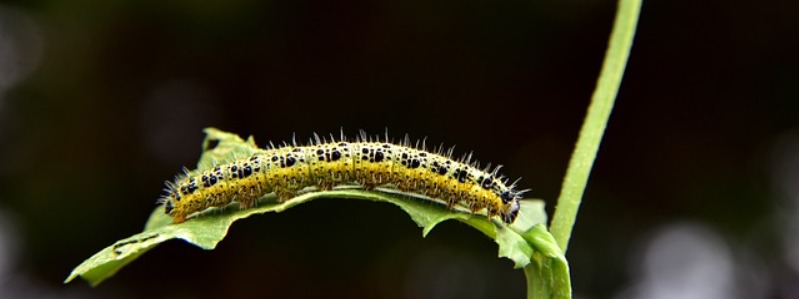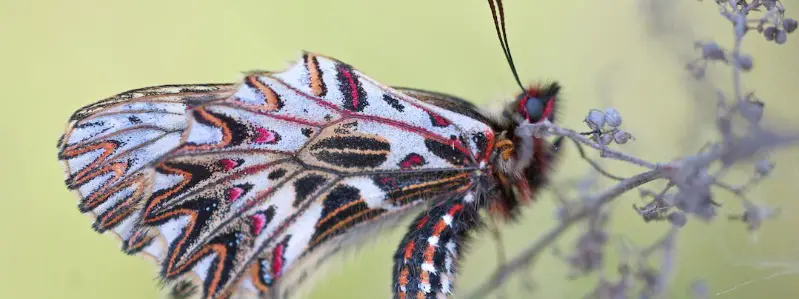Changes That Occur As A Butterfly Develops
Table of Contents
Butterflies start life as an egg. This is usually less than 1/25th of an inch (1mm) in diameter, whitish or light green (but may be brightly colored), and placed on the host plant that the larva will feed on. When the egg hatches, a tiny larva, called a caterpillar, emerges and begins to feed. Once fully grown, the caterpillar molts into a chrysalis, once called the “resting stage” of development. While a chrysalis, the caterpillar is converted to a butterfly. The butterfly’s primary purpose is reproduction.
Butterflies have four life stages. These stages have entirely different functions: caterpillars feed and grow, chrysalids metamorphose, adults reproduce.
To hide them from wasps and other egg predators, female butterflies often place eggs on the lower surface of a leaf or the side of a stem. Eggs are left unprotected on the plant and take from four to seven days to hatch in the warm season. The eggs of some species may remain unhatched through the winter.
Caterpillars
Usually, the first thing the caterpillar eats is its own eggshell, but that is the last bit of animal tissue most caterpillars and butterflies will ever eat. After finishing this meal, the caterpillar turns to the nearest leaf and begins chewing on it. It stretches forward as far as it can go and brings its head down between its front legs, nibbling out tiny pieces to cut a small round piece out of the leaf. Reaching forward, it repeats the process several times in the same place until a full semicircle is eaten. The larva moves a short distance and repeats the process until it is satiated. A larger caterpillar might consume the entire leaf blade, leaving the middle vein of the leaf uneaten when it moves to another leaf.

Caterpillars can double their length every two to four days (depending on temperature and availability of food). As the caterpillar grows, it must shed its skin, a process called “molting” or “ecdysis,” several times because the skin does not stretch. The period between molts is called an “instar” period. Most butterflies have five instar stages. After each molt, the new skin is colored somewhat differently.
Some caterpillars are dull or camouflaged. Others are brightly colored. When a brightly colored caterpillar is toxic or produces poisonous spines, the bright colors advertise this to predators, and the coloration is called “aposematic.” Sometimes an early instar stage will be dull or camouflaged while a later instar will have aposematic coloration.
Caterpillar tissues are well developed, but hidden inside their bodies are blocks of stem cells, called “imaginal disks”, that grow with the caterpillar but do not differentiate into organs until the caterpillar changes.
Chrysalis And Metamorphosis
When fifth-instar caterpillars molt, they change their shape in a process called “metamorphosis.” The first result of metamorphosis is a chrysalis. The chrysalis was at one time called the resting stage of development. But the chrysalis stage is a time of intense developmental activity. Many of the caterpillar organs disintegrate during this stage while adult organs develop from the imaginal disks using the building blocks from the larval organs.
The following table is a partial list of these changes.
- Caterpillar chewing mouth parts are replaced by a hollow, coiled tongue
- Starch-digesting glands are replaced by sugar-digesting glands.
- The digestive tract is simplified and several components disappear.
- Short caterpillar legs are replaced by long, thin butterfly legs.
- Hind legs and their muscles disappear.
- Wings and flight muscles appear.
- Antennae are produced.
- Reproductive organs develop.
Final Stage Of Metamorphosis
As the back of the chrysalis splits, a grotesque, long-legged, squat-bodied insect crawls out. It has tiny wings, and long antennae, and can barely crawl off its old, now empty skin. This animal climbs a few inches upwards then stops and begins to contract its body, forcing fluids into its tiny wings. These rapidly expand several times their length to become the thin, strong, scaled membranes that will carry the newly metamorphosed adult on its travels. After an hour or so, the butterfly extracts excess fluids from the now-hardening wings, and these fluids are ejected from the body. With a few tentative flaps, the butterfly takes wing.

On its search for a mate, a butterfly will visit flowers for nectar, drying puddles for salt, and may travel miles. Males die shortly after mating. Once the female lays her eggs, which may number in the hundreds, she also dies. But the species is renewed as the new caterpillars hatch from the eggs to complete the life cycle of the butterfly.
